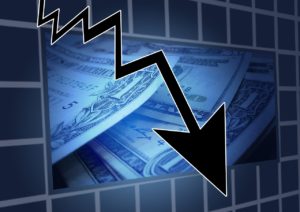A frequent subject of investor claims include the inappropriate recommendation and sale of bond funds. Mutual funds are generally rated by their relative performance within a group of other funds having the investment objective or asset class. Municipal bond funds are no different, and their performance is measured  against the performance of their peers or peer group, and most often, meaningful statistical data concerning the variations of returns, or the variations in asset value versus an overall index, are often overlooked in favor of performance.
against the performance of their peers or peer group, and most often, meaningful statistical data concerning the variations of returns, or the variations in asset value versus an overall index, are often overlooked in favor of performance.
Accordingly, funds are often recommended based purely upon returns, and many fund managers are willing to accept extraordinary risks simply to generate attractive returns, and thereby attract investors. One such example is the Oppenheimer Rochester National Municipals Fund. This fund, because of its “large stake in non-investment-grade and non-rated bonds and hefty holdings in inverse floating-rate notes” was rated “Highest Risk” by Morningstar, which also discloses that the “risks” and “volatility” associated with this fund make it “too bold for the vast majority of investors,” and only suited for “high risk tolerant investors” who seek a “fat yield and can withstand big fluctuations in net asset value.
Nonetheless, these funds were highly recommended based purely on performance. How was this performance achieved, at least in the short term, it was achieved by exposure to considerable risk and a portfolio of “low quality” loans, “tobacco” bonds, “dirt” bonds and “inverse floaters.”
 The “high-risk, high-reward” Rochester style is relatively well known in the investment community. Since its inception, all seven of Oppenheimer’s “Rochester” Funds were managed using a common “Rochester style management,” which is self-described as a “contrarian” and “yield-driven” style which involves “lower-rated, unrated and generally underappreciated municipal securities.”
The “high-risk, high-reward” Rochester style is relatively well known in the investment community. Since its inception, all seven of Oppenheimer’s “Rochester” Funds were managed using a common “Rochester style management,” which is self-described as a “contrarian” and “yield-driven” style which involves “lower-rated, unrated and generally underappreciated municipal securities.”
According to its Registration Statement and Prospectus the Rochester Fund filed with the SEC, Oppenheimer cautioned that since the Fund may invest in lower rated securities without limit, the Fund’s investments should be considered speculative,” that “up to 100% of the securities the Fund buys may be high-yield, lower-grade fixed income securities, commonly called “junk bonds,” that “investors should be willing to assume the greater risks of short-term share price fluctuations that are typical for a fund that invests in those debt securities, which also have special credit risks,” and that “since the Fund’s income level will fluctuate, it is not designed for investors needing an assured level of current income.”
The company also disclosed that the risks associated with the Fund are primarily attributable to the Funds investment in (1) real estate development bonds including speculative “Dirt Bonds,” which are secured only by bare, undeveloped land; (2) below investment-grade securities many of which were not even rated by an independent ratings agency; (3) illiquid securities including Tobacco Bonds; and (4) the Fund used leverage and speculative borrowing strategies, including investment in “inverse floaters” to enhance returns.
The Fund also discloses that the Fund buys lower-grade, high-yield municipal securities to seek high current income. There are no limits on the amount of the Fund’s assets that can be invested in debt securities below investment grade. Securities that are rated below “investment grade” are those rated below “Baa” by Moody’s, or lower than “BBB” by Standard & Poor’s Rating Services, or comparable ratings by other nationally recognized rating organizations.
In fact, at one point, Lipper analytical estimated that 60.27% of the Fund’s bonds were not rated by any independent rating agency. Not only was the Fund concentrated in un-rated bonds, but the ratings that the Manager assigned to many of these bonds as set forth in the Funds SEC filings were only slightly above junk.
 Similarly, the risk associated with the Funds investment in “inverse floaters” is also disclosed: The Fund may invest up to 35% of its total assets in “inverse floaters” to seek greater income and total return. An inverse floater that has a higher degree of leverage is typically more volatile with respect to its price and income than an inverse floater having a lower degree of leverage.” and that “[w]hen the Fund invests in certain derivatives, for example, inverse floaters with “shortfall agreements … The market value of an inverse floater residual certificate can be more volatile than that of a conventional fixed-rate bond having similar credit quality, maturity and redemption provisions.”
Similarly, the risk associated with the Funds investment in “inverse floaters” is also disclosed: The Fund may invest up to 35% of its total assets in “inverse floaters” to seek greater income and total return. An inverse floater that has a higher degree of leverage is typically more volatile with respect to its price and income than an inverse floater having a lower degree of leverage.” and that “[w]hen the Fund invests in certain derivatives, for example, inverse floaters with “shortfall agreements … The market value of an inverse floater residual certificate can be more volatile than that of a conventional fixed-rate bond having similar credit quality, maturity and redemption provisions.”
However, many investment professionals recommended the purchase of these funds based purely on performance, (and the fact that Oppenheimer was “cost sharing” or paying firms to be included within their platform of funds), and did so often without reading the prospectus or conducting ant material due diligence with respect to the recommendation of these securities based upon the disclosures in the Fund’s Prospectus and the information in the marketplace.
The results were disastrous, and at one point, investors in the Oppenheimer Rochester National Municipal bond fund lost almost 60% of their original investment.
The same was true of the Charles Schwab Yield Plus Fund. Purportedly the Schwab Yield Plus Fund was: “ultra short-term bond fund,” with an the “average duration of its portfolio at one year or less” and a “higher-yield[ing] alternative to money-market funds; with a “goal””designed to offer higher yields than a money market fund while seeking minimal changes in share price; and having an “historical ability to minimize its share price fluctuations.”
 The Fund was sold as an alternative to money market funds because the Fund supposedly invested in only “investment grade securities,” providing “higher yields on your cash with only marginally higher risk, [which therefore] could be a smart alternative.”
The Fund was sold as an alternative to money market funds because the Fund supposedly invested in only “investment grade securities,” providing “higher yields on your cash with only marginally higher risk, [which therefore] could be a smart alternative.”
Unbeknownst to the investing public however Schwab, in an effort to inflate the YieldPlus Fund’s yield and attract new investors, as more fully set forth herein, changed the YieldPlus Fund’s “Investment Limitations” to permit the concentration in excess of 25% of the Fund’s assets in otherwise risky Mortgage Backed Securities. As a result, upon the collapse of the market for Mortgage backed securities, the share price of the YieldPlus Fund tumbled more than 35%.
Schwab was found to have willfully violated anti-fraud provisions of securities laws and in addition to certain other undertakings, Schwab agreed to pay a fines and penalties of $118,944,996, including $52,327,149 in disgorgement of fees, and pre-judgment interest of $9,290,698. In response to similar charges brought against Schwab by the Financial Industry Regulatory Authority, Schwab agreed to settle these charges by paying a $18 million fine, representing the $17.5 million in fees that Schwab collected for sales of the fund.
Meantime, investors lost in excess of $3.5 billion.
Guiliano Law Group
Our practice is limited to the representation of investors. We accept representation on a contingent fee basis, meaning there is no cost to you unless we make a recovery for you. There is never any charge for a consultation or an evaluation of your claim. For more information, contact us at (877) SEC-ATTY.
For more information concerning common claims against stockbrokers and investment professionals, please visit us at securitiesarbitrations.com
To learn more about FINRA Securities Arbitration, and the legal process, please visit us at securitiesarbitrations.com
